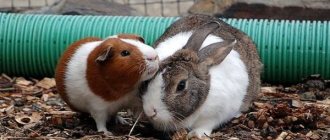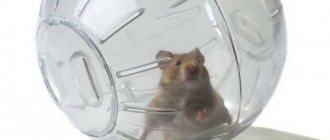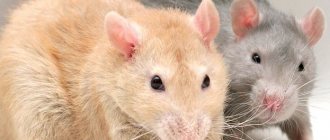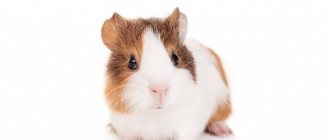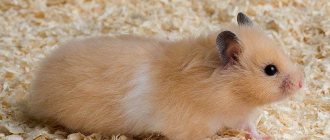Hamsters are one of the popular pets. If you have already decided to get a hamster, then you will have an equally difficult task, which one to choose. Depending on the species, these small rodents differ in size, color and behavior. To accurately determine which hamster is worth purchasing, you need to know their differences and features, take into account gender and age.
Hamsters are often given to children to teach them how to care for a pet and instill in them a sense of responsibility. Also, these small rodents are often chosen as a pet by adults who have little free time. Hamsters are unpretentious, do not require much attention and special care, and are easy to keep at home.
To choose a hamster for a child, the final decision must be made by the parents. Children are more interested only in the appearance of the pet. For parents, something completely different is important: is the hamster aggressive, does it bite, how to keep it, is there a smell in the apartment, how often to clean after it.
But at the same time, it is important to listen and take into account the child’s wishes. He should like the pet, and the child should have a desire to look after and care for it.
What are the main differences between hamsters?:
- Breed;
- Color;
- Wool length;
- Floor;
- Age;
- Behavior.
Before getting a hamster, you should study these differences in more detail. It is also worth paying attention to other equally important points.
The lifespan of hamsters at home is quite short. Depending on the species, these rodents live on average 2-3 years. Therefore, in addition to the type and color, you need to decide on the place where to buy a hamster. If you buy a rodent from your hands or at the market, there is a high chance of getting a sick individual that will not live long. Then all efforts are in vain and such an acquisition will not bring joy and happiness. Let's take a closer look at which hamster is best to get and where to buy it.
Male or female
If you are planning to have one hamster, then there is not much difference between a male and a female. And yet there are certain differences between them. Males are larger, more flexible and kind. But do not rush to make a choice in favor of boys, they give off a stronger and more unpleasant smell. You will have to clean the place where the animal is kept very often, as it will mark its territory.
Females are cheerful and perky. But be prepared for the fact that you can bring a female from the store expecting offspring. In female hamsters, a disease of the reproductive organs, endometritis, is widespread.
When the animals are one month old, it is possible to determine whether they are a boy or a girl based on their emerging sexual characteristics.
How to distinguish a boy from a girl?
By appearance
Pay attention to the condition of the coat. Some believe that males have thicker and longer fur. However, this sign is by no means 100% accurate, since the condition of the coat mainly depends on the health of the pet and the conditions of its keeping. If a store sells an animal with rare fur, do not think that it is a female. Perhaps this is what a boy looks like if he was kept in poor conditions. There is also an opinion that the shape of the back of the male is pointed, while that of the female is rounded.
By behavior
It is believed that female Djungarians are more active and mobile. They rarely sit in one place, rush around the cage like a whirlwind, and actively use the running wheel. Some females turn out to be more aggressive than males and are difficult to handle. But this sign is also indirect. When determining the gender, you should not rely only on the pet’s behavior, as there are quite energetic boys or girls with a calm disposition.
By gender
Studying the genital organs of rodents is the most accurate method of determining the sex of a pet. As soon as the babies reach the age of one month, the boys can notice the testicles located near the base of the tail. If you lightly press on the stomach, they will be even more pronounced. The distance from the genitals to the anus in adult boys is 1-1.5 cm, and in girls – 3 mm. On the guy’s abdomen you can see a gland similar to a navel - with this part male hamsters mark their territory.
In girls, you can see eight nipples arranged in pairs on their belly, but their navel, unlike boys, cannot be felt.
Differences by sex characteristics are the main method of determining sex, and differences in behavior and appearance can serve as additional methods.
Breed
When choosing a rodent breed, pay attention to its character and behavior. There are many varieties, but two breeds are optimal for home keeping - Syrian and Dzungarian. Everyone decides for themselves who is better to have.
Article on the topic: Do hamsters stink, the smells of Djungarian and Syrian hillocks
The Syrian hamster is the best option for a child. Quite a large specimen, characterized by good vitality, cleanliness, and the presence of different colors. Their body length is 12–18 centimeters. There are short-haired and long-haired. The following color variations are common: black, cream, brown, reddish, gray, smoky and others. In addition, babies may be spotted or striped. They are kind, affectionate and responsive. When buying a Syrian, immediately take care of a spacious cage.
The Djungarian hamster is a dwarf version of this rodent. Its length including tail is no more than 10 centimeters. Djungarians are nimble and restless, which is fraught with injury and the possibility of loss. This is aggravated by the increased timidity of the animal. But representatives of this breed can still be tamed. They are not capricious when it comes to food and are quite independent. They have different color options - gray-brown, gray with a blue tint, reddish and even white! Be careful: Djungarian hamsters are highly fertile. Another very sad fact is the short life expectancy of representatives of this breed (about 3 years).
If you decide to get a dwarf, it is important not to confuse it and not buy a Campbell hamster instead. The fact is that these two varieties are very similar in appearance, but the second is more aggressive and capricious in content.
When buying a dwarf hamster, make sure that the distance between the bars in the cage is not too large.
Where can I buy
There are a lot of places where hamsters are sold, but not everywhere you will get guarantees that the pet will be alert, healthy and cheerful when it arrives at its new home. The risk of buying a sick animal is most likely in all kinds of markets. The conditions of their detention there are unbearable, in addition, there is a great danger of catching a cold or becoming infected with infectious diseases. No one can give guarantees regarding the accuracy of the date of birth, purebred or gender of the hamsters. But the market has one significant advantage - a wide range of both animals themselves and accessories for keeping and caring for them.
When buying a hamster at a pet store, you can be sure that it was kept in normal conditions and fed with high-quality food. Therefore, there are more guarantees that the animal is healthy. In addition, upon request, they will provide certificates and other documents for the animal, that is, age, breed and other data will be confirmed. The disadvantages of a pet store are the high price of a rodent and a small selection.
Article on the topic: Allergy to hamsters in children and adults, symptoms
Another place where you can buy a hamster is a nursery. Really healthy and purebred animals are sold here. Before you go for a small rodent, read the information about the nursery and its range on the website. The nursery will not only help you make the right choice, but will also advise you on feeding and care issues. Another argument in favor of the nursery is that the animals are no longer afraid of people, they are sociable and affectionate. Therefore, the hamster and children will quickly become friends.
Pros and cons of Khoma
Hamsters are perhaps the most unpretentious and tiny pets, but communication with them brings great joy to adults and children. Fluffy lumps can surprise, upset and make you laugh.
Undoubtedly, hamsters are problem-free pets, and keeping them has more pros than cons. But, in any case, the owner must be aware of the degree of responsibility for the small life.
In addition to the well-known fact that a hamster needs to be looked after, fed and cleaned in its cage, there are many advantages that speak loudly in favor of purchasing a pet:
- Unpretentious desires in nutrition. Free sale of ready-made grain mixtures, affordable vegetables and fruits make feeding your pet an easy, simple and economical task. A small feed consumption, 10-20 grams per day, also becomes easy when using elite feeds.
- Variety of breeds and budget cost of the animal.
- The animals do not have genetic diseases. Compared to other pets, hamsters are less susceptible to disease if the room temperature is maintained. It is enough for the owner to provide acceptable conditions and the absence of drafts for an active and quiet life.
- If the owner is interested in developing a business, then breeding hamsters will be a major financial benefit.
- The rodent quickly adapts and easily gets used to communicating with humans. He responds well to training and learning, remembers his nickname. With constant communication, he willingly responds to calls.
- The hamster is easy to care for. Easy to care for. The hamster needs an equipped cage and cleaning. There is no need to bathe the animal or buy expensive toys and cosmetics. The only requirement is food in the feeder and fresh water.
- The joy of communication. It’s simply amazing how such a tiny animal can make you forget the problems and difficulties of the past day. A touching bunch of fur with sly eyes and funny cheeks will be an excellent positive remedy.
- Fostering a sense of responsibility and compassion in the owner's child. Regular caring for your pet teaches discipline and order.
Hamsters, like any pet, have their own disadvantages. But, compared to a cat or a dog, they are negligible in argumentation:
- Unpleasant odor coming from the pet. A misconception that directly depends on the frequency of cleaning the cage.
- Relatively short life. Alas, the short term is applicable to any animal.
- Bites. If you keep in mind that a hamster is a rodent and its natural desires include the habit of testing its teeth, then the argument is not significant. The more often communication occurs, the faster the animal stops using its teeth.
- Taking into account natural factors, you need to remember that the pet’s activity occurs in the dark. The problem is solved by a thoughtful location of the cage.
Before purchasing a pet, you need to evaluate the possibilities. Busyness or neglect cannot be an excuse for a careless attitude towards a pet in the event of imminent death.
How to choose a healthy individual
When buying a hamster, learn to determine for yourself whether it is healthy. This is especially important when buying an animal for a child. Be sure to consider the conditions in which the hamster was kept, what he was fed, and check the room for dirt and drafts. Girls and boys must live in separate cages: pregnancy at an early age can harm the health of the female. The health of a hamster can be determined by its appearance, the condition of its coat, and the sparkle in its eyes. The hamster must be well-fed and radiate health with all its appearance. Discharge from the nose and eyes, unevenness on the body, and the presence of parasites are unacceptable. Detection of diarrhea and increased salivation indicate serious problems with the digestive system. In the evening and at night, the animal should be nimble and active, run, make noise, rustle. If he is lazy, slow and indifferent to everything, this is a bad sign. In your hands he should not be nervous, anxious and biting, otherwise it will be impossible to keep him at home. The presence of scratches on the body can also reveal the aggressive nature of the animal.
Article on the topic: What to feed a chinchilla: diet at home (table), list of what can and cannot be given to rodents from food
What to look for when choosing
When acquiring a friend, you need to remember the rules that will help you get a healthy pet, because this is the main component for a long and active life.
- The rodent must be at least three weeks old and no older than two months. A pet that is too small and separated from its mother early is not able to absorb a diet designed for an adult. An older animal quickly runs wild and is difficult to tame.
- Taking into account natural biorhythms, it is better to select a rodent in the evening, when the animal has had enough sleep, is ready to play and cannot be confused with a sick animal. The first signs of the disease are a dull, matted fur coat, a soiled anal canal and purulent discharge from the eyes and nose.
- There is no need to purchase two pets at once; males often share territory. Females - only possible if they are from the same litter.
- Healed scars on the ears and tail of a hamster indicate the pugnacity and cockiness of the rodent, and bald areas on the body indicate infection with a fungus or lice eaters.
Out of pity, you should not get a lethargic or apathetic animal in the hope of curing it and giving it a decent life. Most often, despite the efforts spent, the animal dies.
Using the information received to choose a future friend, each person will choose a pet that will delight them throughout their lives.
How to choose a hamster?
Children love animals and often ask their parents to buy a four-legged pet with whom they can be friends and have fun. But purchasing a large dog or a fluffy cat is not always possible for various reasons. To please your child, you should pay attention to hamsters. From the age of seven, children can already be trusted to take care of a small animal. Caring for an animal instills kindness and responsibility in a child. But you need to take the choice of a rodent seriously. It is important to consider what breed and color the pet should be, preferably a girl or a boy. How to choose a hamster so as not to be disappointed in the purchase?
What things do you need to buy for your pet?
Before buying a little friend for your child, you should think about whether the family has time to take good care of the pet. A hamster is the same living creature as a dog and a cat. A tiny animal also needs attention, love, care, and normal living conditions. Therefore, it is not recommended to purchase an animal for children of kindergarten age who are not yet able to understand the importance and value of any life. A rodent cannot live without its own house, furnished with the necessary things and toys. For a hamster you definitely need to buy:
- spacious cage;
- sawdust for bedding;
- house for sleeping and relaxing;
- drinking bowl;
- a bowl for food;
- wooden toys;
- running wheel;
- tunnels;
- cell disinfectant;
- feed;
- mineral stone;
- vitamins;
- sticks for grinding teeth;
- various delicacies.
Article on the topic: How to determine the sex of a hamster and distinguish a boy from a girl, males and females of the Dzungarian and Syrian breeds
Care and maintenance
Caring for your pet will not take much time. Once every three days it is necessary to change the bedding and remove supplies from the hamster’s house. Feeding is simple: in the morning, just pour grains into the feeder and add clean water.
The list of priority purchases includes:
- Cage with a house. The rodent's place of residence should be equipped with slides and ledges for climbing. Experienced owners recommend choosing plastic structures that are easy to wash.
- Hard food. The rodent eats very little. It is better to buy ready-made grain mixtures marked “for hamsters”.
- Treats. Pets are always ready to eat juicy carrots, apples or cucumbers. They willingly gobble up food from the host's table (boiled buckwheat, egg or chicken fillet).
- Litter. It is more convenient for hamsters to run among sawdust than to climb over heavy pellets. The bedding is poured into a thick layer at the bottom of the cage, because pets love to bury themselves in them and sleep like that.
- Game elements (mazes, running wheel, stairs).
- Mineral stone for grinding teeth.
Important! You cannot feed your hamster fatty meat and milk, mushrooms, exotic fruits, spices, and cabbage. Apricot kernels can be fatal to your pet.
Where is the best place to buy a hamster?
Buying a pet is a responsible matter; you need to choose an animal at specialized sales points. Bird markets exist in almost every major population center, but it is not advisable to purchase a hamster there. Firstly, market traders keep live goods in disgusting conditions, do not monitor the health and well-being of animals, and feed them cheap and low-quality food. As a result, almost all rodents sold in markets have a cold, are infected with parasites or an infection. Secondly, if the purchased animal turns out to be sick and quickly dies, then it is impossible to return the money. Thirdly, market sellers, in order to sell goods to gullible buyers, often lie about the age, gender, breed and health status of the animals.
A pet store is a more acceptable option, but this place of sale also has pros and cons. Hamsters in the store are always healthy, kept in acceptable conditions, and fed normally. But store prices for live goods are significantly higher than market prices, and the selection of animals is not striking in variety. Sellers are sometimes disingenuous and try to sell old hamsters, passing them off as young animals. It is better to buy rodents from breeders. Kennel owners sell their animals at a high price, but there is no doubt about the health and thoroughbred quality of their pets. And the breeders’ rodents are also accustomed to being handled.
Comparing rodents: hamster or rat or guinea pig?
Who is better, a homa or a rat?
All over the world, there have been fierce debates between rodent lovers for decades: who is better, a rat or a hamster? The differences between the two fundamentally different animals are obvious:
Rat
The rat is clean.
Rats are pack animals and need the company of their fellow animals. The rodent is affectionate and appreciates the company of its owner. Easily tamed, quickly remembers the name and hands of the owner. Legends have long been made about the mental acuity and ingenuity of the rat.
They rarely show aggression; even when treated rudely, they are not able to bite until blood appears. Easily adapt to a person's regime. Despite their strong skeletal structure and resilient body, they often suffer from infectious diseases.
Hamster
Hamsters are individualists, they do not need cage mates; rodents are ready to fight until they bleed for personal space. The animals do not yearn for their owner and are not offended by the lack of affection. The hamster is primitive in care and nutrition, which significantly reduces maintenance costs.
Due to its small size, the pet gets by with a cage with minimal dimensions and the necessary accessories in the form of a drinking bowl and feeder. Stays awake at night making noise.
Guinea pig or hamster?
Pigs are practically incapable of showing aggression. The guinea pig is a very sociable and friendly rodent that can easily tolerate being around other pets.
Strives for the company of the owner, loves to bask. Animals are talkative and use a wide range of sounds to express emotions. Easy to get used to your hands. Life expectancy is from 5 to 8 years. Activity occurs during daylight hours.
Is it worth getting a guinea pig?
The pig is not aggressive, it is trainable, but if treated poorly it is capable of harboring a grudge. When living with a family, a spacious enclosure and walks around the apartment are required. Consumes food from the list of acceptable foods with pleasure.
The hamster does not require special attention. Shows aggression when treated inappropriately. It sleeps during the day and would be an ideal pet for an owner who likes to observe the behavior of the animal. Hearing and smell are well developed. Hamsters are clean, rarely get sick and do not require constant attention.
All rodents are cute in their own way. Each type has advantages and disadvantages. Whatever animal you choose as a friend, the main requirement remains caring attitude and care.
Who is better? Hamster or guinea pig?
Guinea pig! Hamster!
Which hamster should you choose – male or female?
Since small rodents cannot be sterilized, the behavior of males and females is significantly influenced by hormones. It is difficult to say which hamster is better - male or female. If the owners plan to keep the rodent alone in a cage without mating, then it makes no difference who to buy. Boys are large, friendly, calm, and more tolerant of human hands. But they constantly mark their habitat with urine, so their fur smells unpleasant, and the cage needs to be cleaned often to eliminate the disgusting smell. The girls are playful, nimble and active. But if you buy a female in a pet store or market that was kept in the same cage with other hamsters, you can get unplanned offspring along with the pet.
Article on the topic: How much does a hamster cost in a pet store, on the market and when purchased secondhand, prices for Djungarian and Syrian hamsters in different countries
Which hamster is better to get: characteristics of popular species
Today, many breeds of the rodents in question are known, but not all of them can be kept at home and allowed near children. Despite their small size, hamsters can be quite aggressive. In addition, they can in some cases cause allergies. Therefore, before buying a hamster, it is advisable to borrow an animal from friends for a few days and check the reaction of the family members.
The most popular rodents that can be kept at home include the following breeds:
- Djungarian is a common species. They have gray fur with a dark stripe on the spine and are classified as dwarf because they do not grow more than ten centimeters. Compared to other breeds, they are best tamed, but due to their small size, it is better not to have them in homes with children of kindergarten age - the nimble animal can slip out of children’s hands and get injured. Suitable for children from 10 years old.
- The Campbell breed looks practical in appearance, like the Djungarian, but their character is quite capricious and they bite. Individuals have a more yellow color and a paler stripe on the back.
- Roborovsky's hamsters are one of the smallest and rarest representatives (adult animals are no larger than 6 cm). A characteristic difference is socialization; they get along with same-sex relatives in the same cage. Kids will have fun watching a bunch of rodents, but they are unlikely to be able to pick them up - they are shy.
- Among Syrian hamsters, the royal hamster is the largest representative of the breed. Adults can be compared in size to a guinea pig. A distinctive feature is that they respond to the sound of their nickname. They are quite hardy in terms of physical health and life expectancy is 3–4 years. If you want to get a rodent for your home, then choose them, but remember - if handled roughly, they will show retaliatory aggression. The coat has different lengths - Angora with long hair and short-haired. Color - from golden to black. The only inconvenience is that they need a large cage. A 7-9 year old child can handle this animal on his own.
- The grasshopper (scorpion) hamster is a wild predator that eats even lizards or scorpions, and is solitary by nature. Therefore, zoologists do not recommend purchasing it for children.
- Siberian (White Russian Dwarf). It differs in that it changes the color of its coat depending on the time of year. It grows up to 10 centimeters and gets along well with people and is friendly.
- Eversmann's hamster is a wild field animal reaching a length of 16 centimeters. It is extremely rare in captivity and is asocial, so it should not be given to children.
Red-eyed albinos are found in every breed. You should not be afraid of them - the unusual color is explained by genetic changes. Such animals are healthy and no different from other “colored” relatives.
What breed of hamsters is best to give to children?
Different breeds of hamsters differ not only in body length and coat color, but also in character. In order for a child to find a truly good and affectionate friend, parents should choose an animal not only with a cute appearance, but also with a cheerful and sociable disposition. What kind of hamster is best to get for keeping in a children's room? The most popular are Syrian and Djungarian rodents.
Syrian hamsters
Large, kind and flexible animals, not afraid of human hands. The optimal choice for children. Rodents of this breed do not show aggression, quickly get used to their owner, and can be taught to respond to a nickname. They are clean, love to wash themselves and tidy up their cage, and live a long time compared to dwarf hamsters, up to four years. The coat color of Syrians can be very different: golden, white, yellow, brown, gray, black.
Djungarian hamsters
If you choose who is better - a Syrian or a Djungarian hamster, then the Syrian will have the advantage. Djungarians are calm and affectionate dwarf rodents. They are bought for children if the dimensions of the home do not allow them to keep a large cage for a large animal of the Syrian breed. Djungarian hamsters are timid, and when they sense danger, they can jump out of your hands and seriously injure themselves, so they need to be handled carefully. Also, when a tiny pet escapes from its cage and hides under furniture, it is not easy to find it. So, parents who are thinking about which hamster to choose have no doubt that Djungarians and Syrians are the best option for their child.
Preparing a rodent for examination
Choose a time when the dwarf is calm or sleepy. At this point, he will be less aggressive and will not try to break free. Be sure to pet, caress, and give your pet a tasty treat.
Place the jungarik in your left palm. Then, using the thumb and index finger on your right hand, gently grab the fold of skin between your shoulder blades. This will help secure the rodent so that it does not spin around and bite its owner. Pulling the skin and lifting the pet in this position is prohibited. Carefully turn the animal onto its back. It is ready for inspection.
How to choose a healthy pet?
Purchasing an animal is a responsible event. It is better not to listen to sellers; their goal is to sell the goods in any way. It is not difficult to distinguish a healthy animal from a sick one, you just need to be attentive. First, you should definitely look into the cage: it must be clean, there must be fresh and high-quality food in the feeder, and the bedding must smell normal. It is important that males and females are kept in separate cages. Otherwise, you can buy a pregnant girl and get unplanned offspring.
Article on the topic: How to distinguish a Campbell's hamster from a dwarf hamster by external signs
You should buy a rodent with thick and beautiful hair, clean and shiny eyes. The animal should not have bald spots, tumors, discharge from the eyes, nose, mouth, ears, or anus. You should not take an animal with a butt smeared with feces and excessive salivation - it has diarrhea and a serious disruption of the digestive system. If a rodent has numerous scratches on its body and ears, then it is pugnacious. This pet should not be purchased for a child.
Determining the sex of small hamsters
These signs are best visible already in two-month-old individuals, but in general, obvious characteristics are visible after 4 weeks. It is impossible to determine the gender of a newborn baby.
If you look closely at the butt of small hamsters, you will notice two small round spots, raised at the edges, of a pink hue. This is the anus and urinary opening.
By the gap between you can determine the gender of the baby. In females they are located very close, sometimes it may seem that there is only one hole, but this is not the case at all. In boys, the anal passage is located directly under the tail, and the hole for urine removal is on the abdomen closer to the center. In the genital area you can find a round “swelling” - this is the development of the testes.
The most common mistake is the desire to see if the animal has testicles. Thanks to this approach, the owner often makes the wrong conclusion, since Djungarian hamsters have quite small genitals. In babies, they have not yet fully formed, and sometimes even in a sexually mature male, the testes do not descend into the scrotum, but are hidden in the abdominal cavity.
If the testicles can be easily seen, then there can be no mistake in determining the sex of the Djungarian hamster - this is a boy. An almond-shaped rounded formation in the pet’s genital area can be noticed 6 weeks after the birth of the rodent. With age, the testes become larger, and gender can be determined without difficulty.
How to choose an affectionate and kind hamster for a child?
When choosing a rodent, it is important to pay attention to its behavior. Since hamsters are nocturnal animals, it is better to observe them in the evening. An animal with a normal character and a healthy psyche behaves actively, runs through tunnels, spins in a wheel, digs in the litter. A sick and aggressive rodent is lethargic, apathetic, often freezes warily, and even falls into a stupor. To check the character of the animal, you can pick it up. If an animal squeaks heart-rendingly, bites, scratches, or tries to escape, then it is too wild and cannot be tamed.
How to determine the age of a pet?
How to choose a hamster for a child so that the gift does not die of old age before it is brought to the new owner? Sellers often lie about the age of live goods in order to get rid of them faster. It is recommended to buy two-month-old animals; they are already adapted to independent living. If you take a baby under three weeks old, it will die. Nursery owners calculate exactly when offspring are born, and pet stores should weigh rodents to find out how old they are. An adult six-month-old Syrian weighs 200 grams, and a Djungarian weighs 50 grams.
How to choose a hamster for a child
Since rodents have been bought, are being bought and will continue to be bought, you need to know how to choose a hamster. Not everyone and not always can turn to a specialist with such a question. Perhaps there is no specialist himself or he is simply paid, and money is already limited. But if you don’t know the basic rules of selection, you can run into a sick individual or one that is simply untrained or wild. Therefore, carefully study the rules for choosing the right hamster.
Article on the topic: Which hamster is better, Djungarian or Syrian: differences, comparison, which one is better to choose for a child
Tips for choosing hamsters
Consider the age of the rodent. You cannot buy an animal if it is less than 30-40 days old. If he is not yet 20 days old, then he may not live long at all, since he still does not know how to eat on his own. At this time, rodents should not be handled, much less examined and transported. And when choosing a hamster, an examination is required. Let's say you purchased an animal and it turned out to be a female. Already at 2 months she can be pregnant. If you don’t see this, then both she and her offspring may die. During pregnancy, a hamster requires special care and nutrition. And finally, the most important thing is that if the pet is already able to eat on its own, it is already 40 days old or more, then it is easy to tame it. The same cannot be said about older individuals. With age, it will become increasingly difficult to tame a rodent. When choosing, consider how much hamsters cost.
Taming a rodent is not difficult, you just need patience. To tame a hamster, you will need a voice and food. You need to say a certain word (for example, the name of your pet) and give him something to eat. Over time, he will associate this word with food and the pet will respond to it. The Syrian hamster can be trained so much that if he is running around the house and you call his name, he will come running to your feet. But this will not happen with every rodent, although it is quite possible to accustom it to your arms or shoulder.
View . First you need to decide on the look you want. Each type is unique. Requires various conditions and care. There are 4 most popular species, you will learn about them in this article: types of domestic hamsters.
Time of purchase. These are nocturnal animals and are lethargic during the day. If you choose during the day, they can easily slip you a sick individual under the guise of sleeping. Then you won’t prove anything to anyone. If you come to buy in the evening, but while the store is still open, of course, they will be more active. In the evening they begin to live life to the fullest. A healthy hamster is active. He almost always cannot sit still. Especially females, they are even more active than males. In the evening, all healthy rodents run and play. If evening comes and your pet still hasn’t woken up from its “sleep,” it means it’s sick and you shouldn’t buy it. You can also determine the disease by the eyes and fur. The eyes should be clean and the coat dry.
Article on the topic: What is needed for a hamster: a list of things necessary for the appearance of a pet in the house
Promotion . Every store has promotions, and the pet store is no exception. But what are they selling us at reduced prices?! That's right, something that has either been left on the shelves, or something is wrong with it. In the case of hamsters, sellers can make serious discounts on sick, injured, or old individuals. Don't agree to this. A sick pet will not bring you joy and may generally disappoint you. Sick rodents need to be treated, for which money will also be spent. If you do not do this, then there is a high chance that he may die. Although in any case there is a chance, but with treatment it is an order of magnitude poor. Just take my word for it, buy a healthy hamster at full price and it will be cheaper for you. Choosing an old rodent is also not the best thing you can buy at a pet store. Not only will it be extremely difficult to tame him, but it is also not known how long he will live. It is very easy to cure old from young; young rodents have white teeth and hair. With age, teeth turn yellow.
Don't completely trust the seller. It’s good to know how to choose the right hamster. The seller may inadvertently make a mistake with the floor. We talked about the definition in the article here: how to determine the sex of a hamster.
Examination . How to choose a healthy individual. A healthy hamster is the key to a successful purchase. There should be no moisture or bald spots on the body. The coat should shine and be well-groomed. The butt should also be clean. I'm serious, if he had diarrhea, he might have worms. Unfortunately, worms in these rodents can lead to death. If an animal stops caring for itself, it means it is sick.
Two at once. It happens that people take two or more individuals at once so that the rodents do not get bored. You shouldn't buy two at once. Unless you move them into different cells. Hamsters will not coexist peacefully. There will be division of territory, biting and fighting. But if several animals in one cage is important to you, then pay attention to dwarf hamsters. They are most suitable for living together.
Article on the topic: Is it worth having a hamster in an apartment: pros and cons
Color . Oddly enough, the color of these animals affects not only their appearance, but also their character. Spotted rodents are more aggressive. Females are more active. If you want a wild animal, then take a spotted female. If it’s calm, it’s a male dwarf. This species is the calmest among all domestic ones, has almost no odor and does not require much time.
Newbie. Do not show, and especially do not tell the seller that you do not understand hamsters. I'm not saying that every seller is bad. But often your ignorance can be taken advantage of in order to sell problem individuals or those that are not bought. After reading this article to the end, you will gain basic knowledge that will be enough for you to choose the right hamster.
Tamed hamster. If they tell you that the smaller the animal, the easier it is to accustom it to handling, this is not true. It is easier to handle and train the Syrian hamster; he is the leader in this regard. Moreover, this is the largest of all domestic species. When a pet is small, it is easier for it to slip out of your hand and fall. A careless movement can harm him.
I want it in my arms. If you have decided on a particular hamster, ask him to catch it for you. Then you need to stroke him lightly and check his reaction (maybe he won’t like you). This will show that you come in peace. If he doesn’t feel safe in your hands, he will twitch, roll over and break free. If he trusted you and froze, it means the hamster will love you.
After the purchase . On the way home, the rodent may chew on the box in which it is traveling. Don't worry, this is completely normal. At home, let him out into the cage and let him get used to it. You shouldn't play with him for a while, because moving is a serious stress for him. Let him get used to it, at least for a couple of days. At this time, you can win his love and trust by hand feeding him. But this does not mean that you need to starve until you eat from your hand.
Article on the topic: Which hamster is better, Djungarian or Syrian: differences, comparison, which one is better to choose for a child
How to choose a hamster for children
If we are talking about a rodent for a child, then this greatly narrows the choice. In this case, of the four most popular breeds of these rodents, only two are suitable. This is the Syrian and Roborovski's hamster. The Syrian is suitable for children due to its size, friendliness and trainability. This species is one of the largest. The weight reaches 100 grams and dimensions up to 18 cm. This makes it more difficult for him to inadvertently harm. The Roborovsky hamster can be chosen due to its character. This is a very cute creature that doesn't bite. That is why it can be given to children without fear. But there is one nuance: its dimensions are only 4-6 cm and it is very nimble. Therefore, if the child does not follow a little or gets scared, the animal may slip away and fall. Choosing a hamster for a child is not an easy task, but I chose the Syrian one.
Advice from professionals
Experts in the field of breeding Djungarian hamsters give their recommendations for determining the sex of pets.
- Do not try to find out the sex of the jungarik until it is at least three weeks old. Trying to discern sexual characteristics, the owner risks harming the fragile hamster, whose body is still forming.
- To see the genitals, carefully grab the adult animal by the scruff of the neck with your fingers and lift it up. This way the furry pet’s body is in an elongated position, and sexual characteristics become more clearly visible.
- You can try to see the gender in a way that is less stressful for the animal. Place the rodent on its back in your palm and hold it securely, but very carefully with your thumb so as not to hurt. To calm an animal alarmed by such manipulations, you can gently stroke its abdomen, and then the parts of its body of interest will be clearly visible.
- If there is still a need to determine the sex of a small cub, then you can carefully touch it at the location of the genital organs. In boys, small swellings are felt in the groin area - future testicles.
- Pay attention to the size of the pet. Females are usually larger and more plump than their partners.
Observing the behavior of a hamster and noticing its passivity or aggression, you should not draw conclusions regarding gender. Both aggression and excessive calmness are more often associated with the health of the pet. If you notice that the animal has lost its appetite or has begun to bite the owner’s fingers, take the hamster to the veterinarian; perhaps the rodent has caught a cold, has been poisoned, or is experiencing a vitamin deficiency.
Don’t forget to feed your pets properly, change the water daily, clean the cage regularly and let the kids go for walks. And then it is possible to raise a healthy, long-lived hamster or get full-fledged good offspring from him.
You will learn how to determine the sex of a hamster in the video below.
Hamsters are the most popular pets. Everyone is happy to buy them - both adults and children, both for large houses and small city apartments. However, there are still serious discussions going on: what gender of hamster should I prefer? Male or female? After this question appeared in reader mail, we decided to translate a small but capacious and interesting article for you.
Don't worry about your choice, dear readers! Both “boys” and “girls” make wonderful pets! And this is the most important thing! And now - a little about the differences between animals of different sexes.
As a rule, males behave more calmly than females.
Males have thicker and longer fur, sometimes even hanging down to the floor. Of course, there are males with shorter fur, but most “men” will still need your help with periodic combing. For the same reason, carefully select the material from which the cage filler is made. Such as sawdust, for example, can become embedded in the fur of an animal. We recommend aspen shavings or an economical litter made from pressed (chewed) paper. Works great, just needs to be changed more often. But both materials are harmless!
“Girl” hamsters go into heat every four days. The process may be accompanied by a very unpleasant odor, especially in the genital area.
It should also be noted that in dwarf breeds of hamsters, gender differences are much less noticeable to owners.



